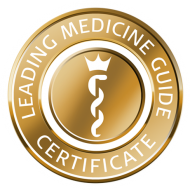Welcome to minimally-invasive neurosurgery
Neurosurgical operations often reach into complex areas of the brain, the skull base or the spinal cord. The goal of neurosurgery is to protect the delicate functions of the brain while at the same time achieving an optimal surgical outcome. This can be done by combining the latest minimally invasive microsurgical techniques with the most advanced and up-to-date technical resources – allowing us to reach the surgical target safely while keeping the risk to a minimum.
In our Center for Micro-Neurosurgery, your safety and care begins with pre-operative imaging and planning. We use Virtual Reality (VR) computer technology combined with high resolution MR and CT imaging for pre-procedure planning. This allows us to define the safest and most efficient surgical approaches even in the most complex regions. During the operation computerized navigation systems and real-time imaging with MRI, CT, ultrasound, angiography and fluorescence provide constant monitoring to further enhance surgical precision and safety. In addition, the use of endoscopes enables delicate microsurgical procedures, even in difficult-to-access regions.
Modern neurosurgery is embedded in a close interdisciplinary collaboration with colleagues from neurology, internal medicine, otolaryngology, anesthesiology and other specialties. Our Center is part of Switzerland’s largest private hospital, giving you access to a full range of highly specialized medical disciplines. This collaborative approach encompasses your entire treatment – before, during and after the actual surgical procedure, ensuring the highest standard of care.
Please do not hesitate to contact us for any further information.
We are here to help.
Prof. Dr. med. Ralf A. Kockro

ANEURYSM RISK CALCULATOR
The risk of rupture of intracranial aneurysms has been studied in a variety of multi-center trials. This calculator was developed based on the results of the PHASES meta-analysis of six major international studies which analyzed a total of 8382 patients with 10272 unruptured aneurysms over a median time of 3 years. This is equivalent to 29166 patient-years of follow-up. The overall five-year risk of aneurysm rupture revealed to be 3.4%. This online aneurysm risk calculator allows calculating an individual risk profile by taking into account a variety of key factors. This serves as a basis for interdisciplinary decision making regarding the best treatment option.
USAGE GUIDANCE
Aneurysm and patient factors identified in PHASES as being associated with a significantly increased risk of aneurysmal rupture are allocated a number of points which are collated to give a final PHASES score. The risk of rupture in a particular aneurysm in a given patient can be inferred from the score. Due to its pooled nature conferring increased statistical sensitivity, the PHASES analysis identified six key risk factors for aneurysmal rupture, not all of which were predictive of rupture in UCAS and ISUIA.
Aneurysm location was categorized into three groups:
1. Middle cerebral artery
2. Internal carotid artery
3. Others (including anterior cerebral arteries, communicating arteries and the posterior circulation).
The size of the aneurysms was categorized into four groups:
1. < 7 mm
2. 7 – 9.9 mm
3. 10 – 19.9 mm
4. ≥ 20 mm
Rates of aneurysm rupture were reported as five-year rupture rates according to size and location of the unruptured aneurysm as well as ethnicity and age of the patient and the presence of high blood pressure (hypertension) or previous subarachnoid hemorrhage.
In the PHASES aneurysm calculator, the figures returned under 5 year rupture risk reflect those provided in the PHASES study. Based on this table, the annual risk of rupture was calculated by simply dividing this number by five, using the approach of da Costa et al in their 2004 Neurogurgical Focus article. As with the ISUIA and UCAS calculators, the PHASES calculator gives cumulative lifetime risk based on the annual rupture rate using the following equation:
1 – (annual chance of not bleeding) x expected years of life = risk of hemorrhage
Each time a figure for life expectancy is keyed in, the algorithm automatically updates the risk for the given aneurysm, based on the various patient and aneurysm factors. This feature should be used with caution, as it is known that aneurysm growth and rupture rate are not constant over time (see Koffijberg et al. Journal of Neurosurgery 2008).
The risk of aneurysm rupture is known to vary across different populations. 90% of the patients enrolled in ISUIA were white Europeans or North Americans. The risk in this population appears to be significantly lower than those of the Japanese patients studied in UCAS. Small studies of patients with aneurysms in Finland suggest an especially high rupture rate for ethnic Finns. PHASES thus incorporates ethnicity (Japanese, Finnish or neither) into their algorithm. The reasons for this difference are unclear, but may be related to unknown genetic or environmental factors.
The PHASES analysis is the most complete dataset currently available for predicting the likelihood that an unruptured intracranial aneurysm will result in a subarachnoid hemorrhage. The vast majority of included patients were from UCAS and ISUIA and thus the pooled analysis suffers from the same limitations as these individual studies. Most importantly, some patients in these studies had their aneurysms treated during follow-up due to an increase in size or the development of symptoms. The removal of these high-risk patients from the cohort means that overall rupture risk may be somewhat higher than indicated in ISUIA, UCAS or PHASES.















